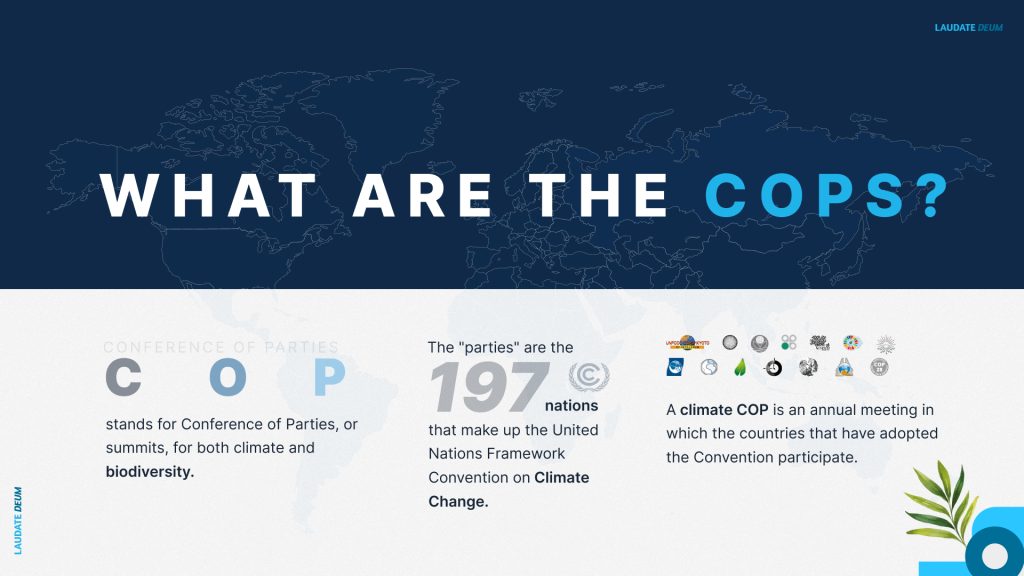
COP 28 begins on November 30 in the United Arab Emirates and will last until December 12. Political leaders will meet there to rethink, restart and refocus the climate agenda. But what is the origin of the COPs? We tell you all about it here.
What are COPs?
COP stands for Conference of Parties, or summits, for both climate and biodiversity. These summits were established after Rio 92. The “parties” to the climate summit are the 197 nations that make up the UNFCCC, the United Nations Framework Convention on Climate Change.
A climate COP is an annual meeting in which the countries that have adopted the Convention participate. Since 2015, all adhering countries accept the existence of climate change and share the common goal of limiting the increase in the concentration of greenhouse gasses in the atmosphere and achieving net zero emissions within this century.
Brief history of COPs
Since 1995, representatives of 197 parties (196 countries and the European Union) have been meeting to discuss the climate issue. The 1992 Rio de Janeiro Conference led to the adoption of the United Nations Framework Convention on Climate Change (UNFCCC), a treaty that entered into force in 1994.
As a result, the first COP was held in Berlin in 1995. The Kyoto COP3 in 1997 developed a Protocol that set the objective of reducing greenhouse gas emissions by 5% compared to 1990.
In 2007, it was concluded that the signs of global warming were unquestionable and the “Bali Action Plan” was adopted. The 2009 COP15, held in Copenhagen, was expected to be historic. However, the agreements reached were not legally binding.
In 2010, COP16 was held in Cancun. There, the Green Climate Fund was established, creating an ambitious program to help low-income countries. Subsequently, COP18 in Doha in 2012 ratified the Kyoto Protocol. The Warsaw COP19, in 2013, also failed to meet expectations.
Finally, in 2015, change came. COP21 in Paris brought an agreement that surpassed everything that had previously transpired. All 197 parties agreed and accepted the scientific knowledge on climate: human-induced climate change is in fact occurring.
On November 4, 2016, the Paris Agreement entered into force. Its objective was to keep the increase in global temperatures below 2°C, while striving to keep it below 1.5°C. In 2019, COP 25 in Madrid failed to achieve significant action on climate change mitigation, loss and damage financing, and international collaboration.
Due to the 2020 pandemic, COP26 was suspended and was finally held in November 2021 in Glasgow. It managed to reestablish the commitments made at the launch of the Paris Agreement, after a certain laxity in commitments due to COVID-19.
In 2022, COP27 in Sharm El Sheikh, Egypt, made it clear that, with the war in Ukraine, fossil fuels still provide 80% of the world’s energy and their use continues to increase. There was progress on the financing of “loss and damage” for the most affected countries, but little on the issue of climate change mitigation.

COP28 in Dubai
This year, the United Arab Emirates will host the next Conference of the Parties (COP28) between November 30 and December 12.
The Persian Gulf country is a major exporter of fossil fuels. However, it has also invested heavily in renewable energies. Oil and gas companies are looking for new projects in the country to further expand production.
Follow Laudato Si’ Movement’s social media to stay informed about the upcoming COP in Dubai.





